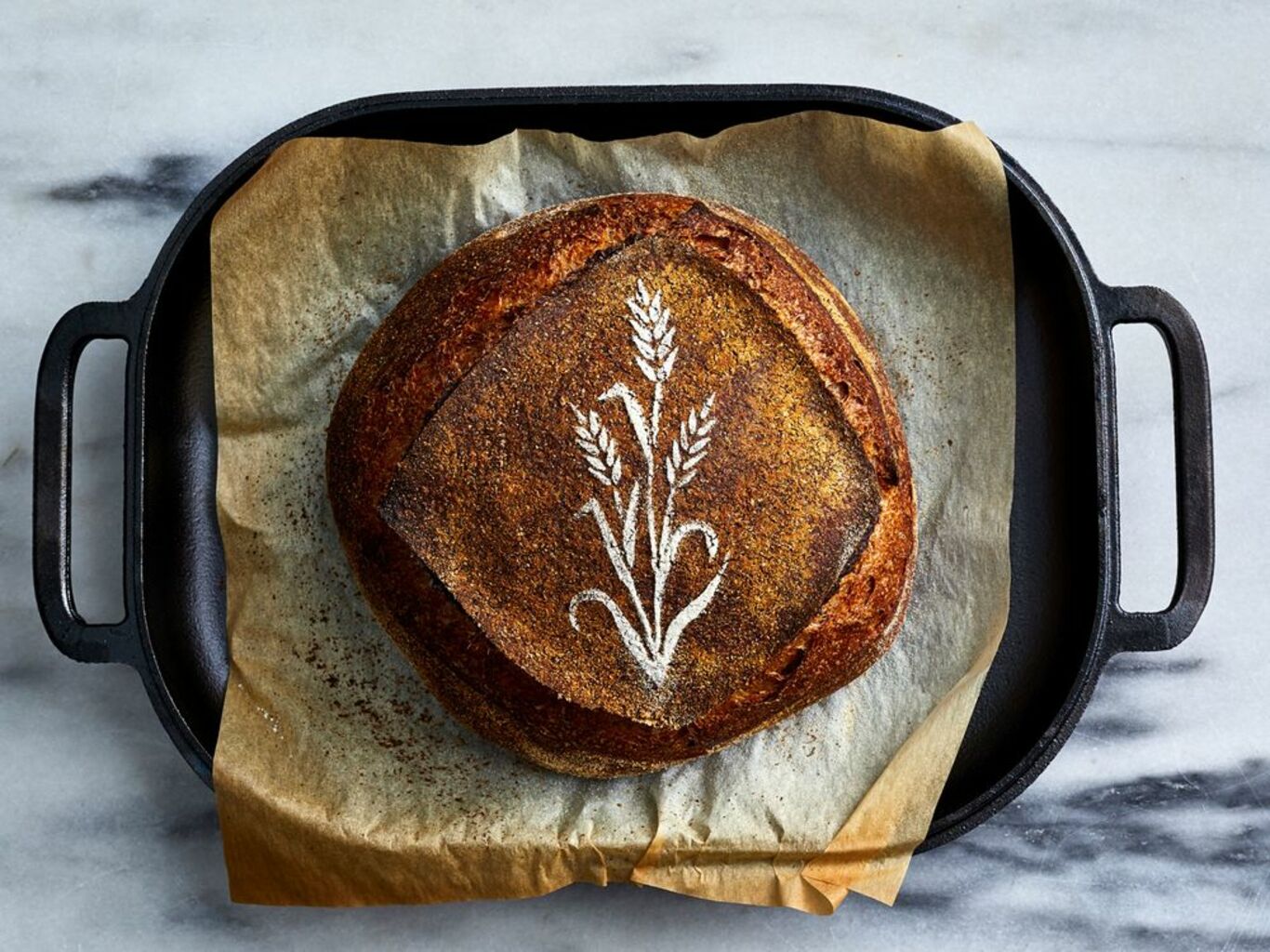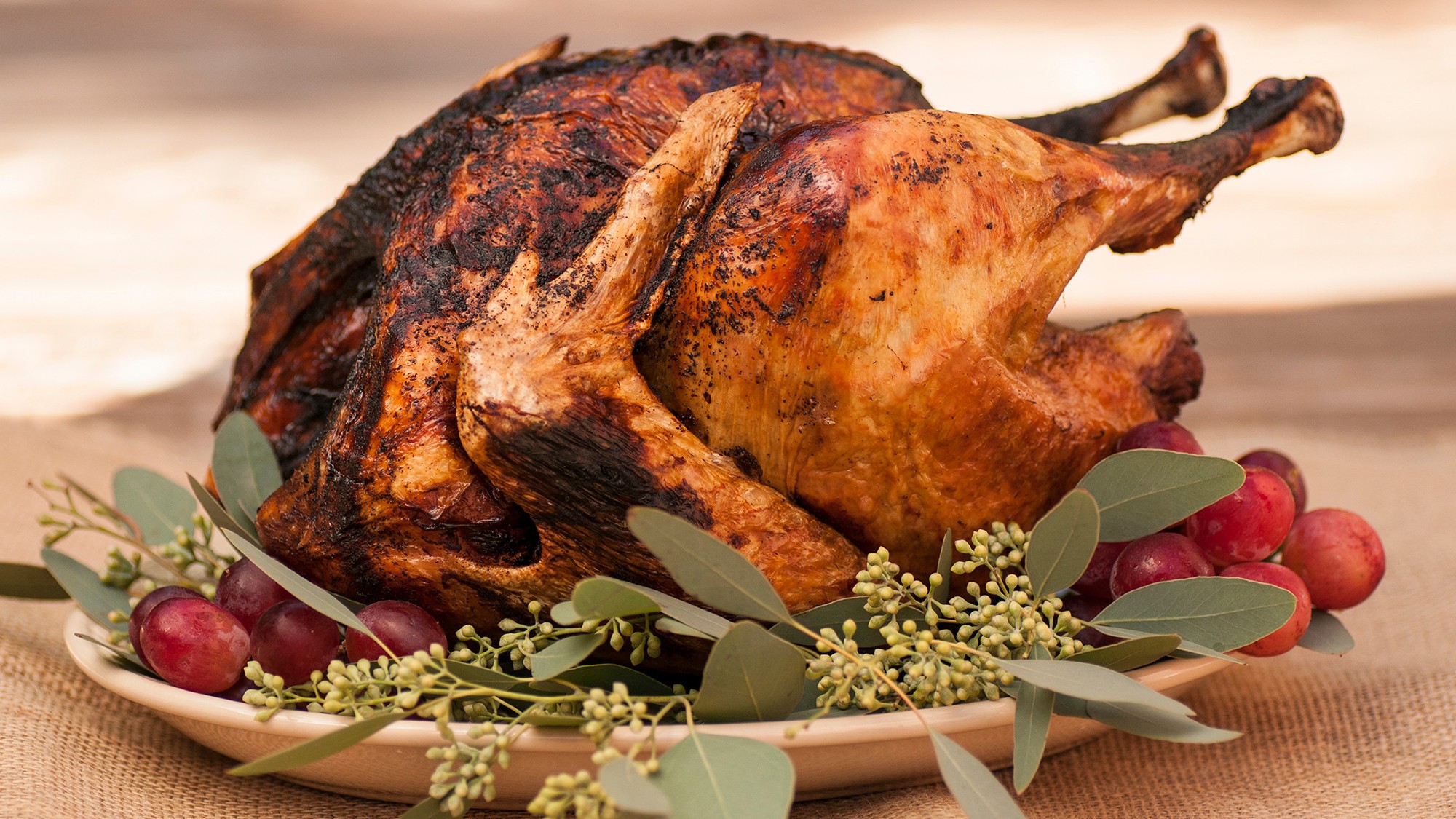As the resident bread baker in the F&W kitchen, I am always seeking out new and better baking techniques, ingredients, and tools. When I was tasked with tackling the recipes for the March 2019 cover feature about Bellegarde Bakery, I made a b-line for New Orleans to see firsthand what owner Graison Gill was doing with freshly-milled local grains. After teasing me for showing up at the leisurely hour of 5 AM, Graison put me to work.
With only three basic components -- flour, water and salt—the quality of a loaf of sourdough bread hinges on the ingredients. Graison meticulously sources fresh grains from around the south and mills them daily. Similar to brewing coffee with freshly ground beans, baking bread with freshly milled flour unlocks terroir specific flavors and nuances. Plus, sourcing locally grown grains connects the baker and the farmer. The two work in tandem, revitalizing heritage grains and producing intensely flavorful hearth breads. It makes sense then, that the recent resurgence of hearth style breads, has been mirrored by the revitalization of heritage grains. These grains, unlike mass produced conventional wheat bred for yield, are grown with flavor in mind.
The country loaf at Bellegarde Bakery in New Orleans is made with a blend of two varieties of wheat flour - Ruby Lee and Kansas White. Ruby Lee provides a creamy, grassy flavor and an overtly sweet aroma. Kansas White is rich and slightly floral with a high protein content that promotes strong gluten development. All of the flours at Bellegarde are cold-milled between 2 giant granite stones. Keeping everything cool during the milling process preserves flavors and nutrients found in the bran and germ of the wheatberries. Freshly milled flours are wholesome and alive.
Seasoned bakers venturing into the world of freshly milled flours will notice difference than when baking with white flours:
- The dough is thirstier. It will absorb considerably more water than a dough made with conventional flour.
- Fermentation occurs faster. This is the result of additional nutrients in the flour which provide “food” for the yeast to thrive.
- The loaf has a tighter crumb. Despite the dough’s high hydration, the crumb structure will be relatively tight due to bran and germ particles disrupting gluten development.
- The bread tastes better. Sliced straight from the loaf or toasted with butter and jam, you can’t go wrong.
Here, a step-by-step guide to baking with freshly milled flours at home:
To create a shelf-stable product, conventionally produced flours typically have the most nutritious and flavorful parts of the wheatberry removed. The bran and germ, found in 100 percent extraction freshly milled whole grains, are rich in fiber, B vitamins and healthy fats. Store freshly milled flours in the freezer to prevent oils in the germ from turning rancid.

Single origin flours, such as the ones milled at Bellegarde, reflect their individual terroir through characteristic flavors and aromas. Conventional flours are often made from a blend of wheat varieties in order to produce a consistent product year after year. Through a series of siftings, conventional bread flour is transformed from a wholesome, texture-rich flour to a muted white powder.

Kansas White (top), conventional bread flour (bottom left), Ruby Lee (bottom right)
Stretching and folding, as opposed to kneading, is a gentler and less messy way of developing gluten while simultaneously coaxing out flavor through a lengthy fermentation. Using wet hands to prevent sticking, stretch a portion of the dough almost to the point of tearing and then fold it over the remaining dough. With each turn, the dough will become progressively more extensible (stretchy).

Pre-shaping the dough builds structure for the final loaf. In as few movements as possible, pull the dough across a clean, unfloured work surface to form a rounded ball. Using a bench scraper as an extension of your hand, slide the dough with smooth and assertive motions.

Overlapping folds develop tension without degassing the dough. Gently stretch the dough to the side about 6-inches and then fold it up and over the previous folds to form a neat package. Incorporate as little flour as possible to ensure the seams stick to one another and that no pockets of raw flour are baked into the final loaf.

The crosshatch fold further develops the necessary tension for a robust oven spring (the rapid expansion of volume the loaf undergoes during the first part of the bake). Pull a small portion of dough on either side of the loaf across at a diagonal; press lightly to secure. Repeat to form 3 crosshatches - top, middle and bottom of the loaf.

Stenciling is purely decorative. It can be used as a baker’s “signature” or to distinguish between types of breads. Dusting the design in white rice flour provides a distinct contrast against the golden baked loaf. Rice flour also has a high heat tolerance making it unlikely to scorch.

Scoring allows the bread to fully expand while baking. Hold the lame at a 45° angle with the blade pointed toward the center of the loaf, and slice the dough, about 1/4-inch deep, using the corner edge of the blade. Use decisive and swift movements to prevent dragging the dough and creating jagged tears.

Breads made with freshly milled flours contain more residual sugars after fermentation due to the abundance of nutrients in the grain. When exposed to dry heat, the sugars on the surface of the loaf become deeply caramelized and release a toasty sweet aroma. For a well developed crust, bake the bread to a rich mahogany color.

High hydration breads typically have an open crumb (top), but fragments of bran and germ found in freshly milled flours disrupt gluten development contributing to a tighter crumb. Use a bread knife with scalloped edges and rounded teeth to saw through the crust and prevent tearing the loaf.
Sourdough made with conventional flour (top) vs. Bellegarde country boule (bottom)
Get the full recipe for Bellegarde’s Country Boule here.
This article was written by Paige Grandjean from Food & Wine and was legally licensed through the NewsCred publisher network. Please direct all licensing questions to legal@newscred.com.







